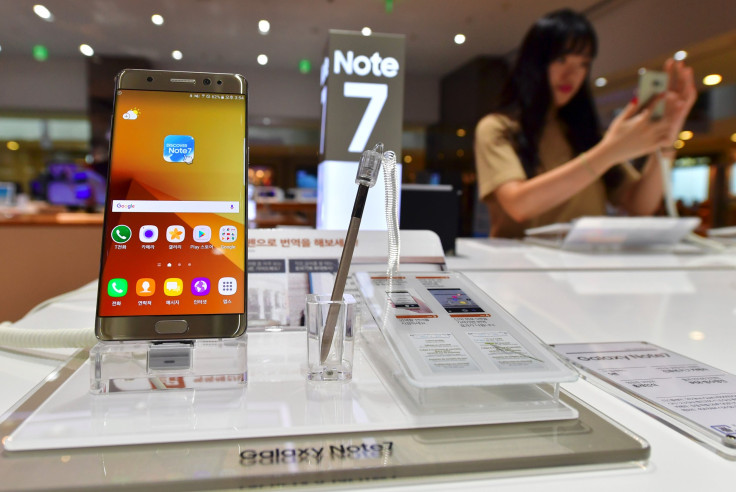Was The Samsung Galaxy Note 7 Failure Inevitable? What May Happen To Handsets Still In Circulation

It may seem as if the Samsung Galaxy Note 7 fiasco is over, but there is potential for issues to resurface. Despite Samsung having recalled the majority of the three million Galaxy Note 7 handsets sold worldwide, a significant number of enduring fans continue to use the device. The handsets that remain on the market may serve as a case study for what would have happened to the Galaxy Note 7 had it not been recalled.
The Galaxy Note 7 was discontinued in October 2016 due to several cases of handsets catching fire and exploding. Though there have been no other reports of Galaxy Note 7 explosion or injury since the final recall, some believe the device was doomed to malfunction even if its flaw did not present as spontaneous combustion.
“The ones that are still out there, over time you’ll see the battery swell. When batteries swell it’s going to push everything out. The frame is going to pop,” Wayne Lam, IHS Markit principal analyst for mobile electronics, told International Business Times.
Samsung presented the findings of its investigation into the Galaxy Note 7 last week and determined the fault was primarily in the device’s battery. The manufacturer explained there were different faults within the two batteries used on the Galaxy Note 7, which lead to short circuiting and explosion. However, there was likely a design flaw within the Galaxy Note 7 handset that also contributed to its failure, according to Lam.
Samsung did not focus on this aspect in its investigation, but third-party research groups that studied the Galaxy Note 7 independently determined the battery housing was too small to accommodate the device’s 3,500mAh cell. Having reported its findings in December 2016, the teardown publication Intrumental also believes Galaxy Note 7 handsets would break apart over time due to an inability to accommodate natural battery swelling.
What was supposed to be Samsung’s greatest innovation in the Galaxy Note 7 turned into its greatest hinderance. The manufacturer aggressively promoted the Galaxy Note 7’s unique design when it released. The Galaxy Note 7 was the first phablet to feature Samsung’s dual-edge curved display. With this design, the Galaxy Note 7 handset was 2.2 mm narrower than the previous Galaxy Note 5, Samsung Senior Designer Hong Yeo told iDigitalTimes in August.
The shrunken chassis housed the battery in a highly pressurized environment. While batteries are already a densely packed power source, the Galaxy Note 7 battery was approximately 22 percent more dense than the previous Galaxy Note 5, according to Lam. It was also denser than the 3,600mAh battery in the Galaxy S7 Edge, which features a design similar to the Note 7.
“The fundamental technology of the battery hasn’t changed. But cramming everything into a smaller and smaller space leads to safety gaps,” Lam told IBTimes. “They left very little room for error. Unless it was a perfectly manufactured battery cell there was bound to be some issues.”
While exploding handsets were the immediate catalyst behind the Galaxy Note 7 recall, it was likely this possible long term-effect that lead to the ultimate discontinuation of the device. Samsung was forced to acknowledge that other malfunctions could arise while the device remained on the market, Lam added.
In addition to the recall and urging users to surrender devices for exchange or refund, Samsung also deployed a software update to disable handsets. Still, there are approximately 76,000 Galaxy Note 7 handsets still being used in the United States, according to CNBC. Many of those users have found ways to bypass the end-of-life update or continue to ignore notifications to power down Galaxy Note 7 handsets.
Several owners have congregated within online support forums, and indicate they plan to keep using the handsets, at least until the Galaxy Note 8 releases. They don’t feel their handsets are dangerous, to the chagrin of friends, family and media. Instead, numerous forum members feel they have been unfairly scrutinized in Samsung’s effort to bury the Galaxy Note 7.
However, it is likely fans’ continuous loyalty to the brand that will keep the Galaxy Note line going. It is likely many more Galaxy Note 7 owners would have kept their original devices had the final recall not occurred.
Since its press conference discussing the Galaxy Note 7, Samsung appears to be more forward-facing, giving hints toward the Galaxy S8 launch and confirming that the Galaxy Note 8 will release later in 2017. The manufacturer has detailed future devices will be rigorously tested under a new eight-point safety check system in an effort to rebuild consumer trust.
“What those quality checks really serve as is to calm the market down,” Lam said. “You need a big company like that to admit fault and take responsibility.”
© Copyright IBTimes 2024. All rights reserved.






















